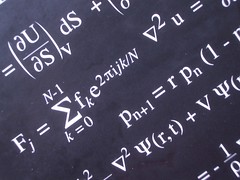 |
The general theory of relativity has a reputation of being very difficult to comprehend. This is especially true for the layperson or undergraduate students. Space, time, and gravity: the theory of the big bang and black holes by Robert M. Wald plots a very accessible course through the core phenomena of general relativity without any unnecessary mathematical detail.
|
The book is based on lectures that Wald gave in Chicago 1977. The 1992 version is updated due to the great advancements in observation cosmology since the first edition.
The book consists of 10 main chapters, an appendix (in the 1992 edition) and a list of suggestions for further reading.
Chapter 1 describes the geometry of space and time from a Newtonian “everyday” perspective. The ideas of spce-time diagrams, the principle of relativity and absolute simultaneity are given here. In the next chapter it shown how these ideas need modifying following Einstein.
Chapter 2 introduces special relativity. The principle concepts of Einstein’s axioms, relative simultaneity, the space-time interval, Lorentz contraction and time dilation are neatly presented. Wald emphasises the geometric way of thing which is paraphrased as “it is all in the metric”. With this in mind, geodesics in Minkowski space-time are discussed and the conclusion is drawn in special relativity the space-time is flat .
General relativity is the subject of Chapter 3. Wald discusses why Newtonian gravity cannot be directly incorporated in to special relativity. The key trouble is the notion of relative simultaneity and instantaneous interactions. The solution is that equivalence principle strongly suggest that space-time is not flat. Wald then moves on to discuss the Einstein field equations, the bending of light, and the gravitational red shift.
Chapter 4 discusses the implications of general relativity for cosmology. Principally it is argued that the Universe must have started from a singular point and that the “Big Bang” is rather unavoidable in the the context of classical general relativity. Wald describes the large scale structure of the Universe, the “Big Bang” and Hubble’s law. In the final part he discusses singularity theorems and questions if we should take singularities seriously? Only quantum gravity will really shed light on this…
Chapter 5 presents a walk through the evolution of the Universe. Evidence for why we think the Big Bang is a good theory is presented here. For example the CMBR and the cosmic abundance of deuterium.
Stella evolution up to white dwarfs and neutron stars is the subject of Chapter 6. Wald discusses stellar birth, the continued evolution of stars, teh electron degeneracy pressure and white dwarfs, supernovae and neutron stars.
The gravitational collapse to form black holes is the topic of Chapter 7. The basic structure of black holes is presented as is the cosmic censorship hypothesis and the no-hair theorem. Due to the singularity theorems of Penrose and Hawking, and other works it is generally accepted that complete gravitational collapse will always result in a black hole.
Chapter 8 discusses the Penrose process of energy extraction from a rotating black hole. Wald discusses the notion of ennergy-momentum in special and general relativity. The complications of what we mean by energy in general relativity are highlighted. The Ergosphere of a rotating black hole is described as is the Penrose process and the energy extraction limits.
The astrophysics of black holes is the subject of Chapter 9. Wald discusses the proposed mechanisms of black hole production: collapse of a massive enough star, collapse of a cluster of stars and primordial black holes. Wald then discusses gravitational lensing, gravitational radiation and X-ray sources.
Chapter 10 discusses particle creation near a black hole and Hawking radiation. The consequence for conservation laws of black hole evaporation are discussed as is the strong link with thermodynamics.
We have learnt a lot since the 1977 edition and also the 1992 edition about observation cosmology and the deep link between black holes and thermodynamics. That said, the book is a wonderful expose to these deep ideas in a way that is rather accessible.
As a note, I own the first edition from 1977 and so based the above review on that. From what I can tell the second edition is very similar but the numbers are updated.
Paperback: 164 pages
Publisher: University of Chicago Press; 2nd Revised edition edition (1 Mar 1992)
Language English
ISBN-10: 0226870294
ISBN-13: 978-0226870298



